This is a continuation of a test of the following lenses on the Sony a7RII:
- Zeiss 85mm f/1.8 Batis.
- Zeiss 85mm f/1.4 Otus.
- Leica 90mm f/2 Apo Summicron-M ASPH.
- AF-S Nikkor 85mm f/1.4 G.
- Sony 90mm f/2.8 FE Macro.
The test starts here.
In the preceding post, I reported on some left/right color fringing with the Batis 85 wide open. I went back to the on-axis color fringing samples from a few days ago and processed them in the CA app of Imatest looking at a vertical edge.
Here’s what I saw wide open:
Well, something appears to be there. The dark side has a red bias, and the light side a green bias.
If we look at an edge at 90 degrees to that, we don’t see the effect.
The big question is, is this bad behavior, or just an odd departure from perfection. In order to answer that question, we need to look at the vertical edge results for the other lenses.
Let’s start at f/1.4. The Otus:
Well, that looks pretty wonderful. How about the Nikon:
That’s more down to earth performance. Makes the Batis look good, although the Nikon is giving away two thirds of a stop.
Let’s look at f/2.
The Batis:
Notice that stopping down a third of a stop has substantially improved the Batis on-axs color fringing performance.
The Nikon:
The Otus:
And, the good-looking, bad testing Leica:
So the Batis does not look at all bad in comparison tothe other lenses in this test.
Let’s continue on to f/2.8 so we can pick up the Sony. In fact, we’ll start with it:
Looking good.
Batis:
Also looking good.
Nikon:
Not so good.
Leica:
Not quite as good as the Nikon.
I won’t show you the Otus at f/2.8, since it was already so good at f/2.
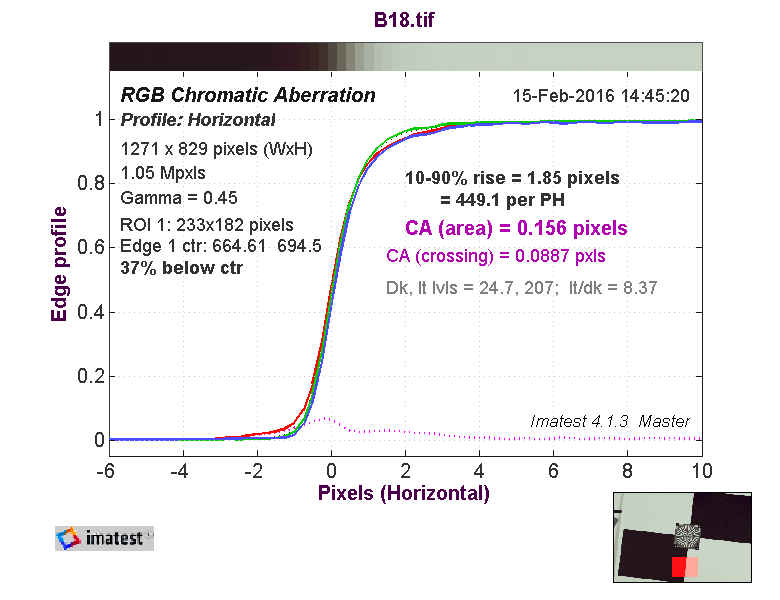
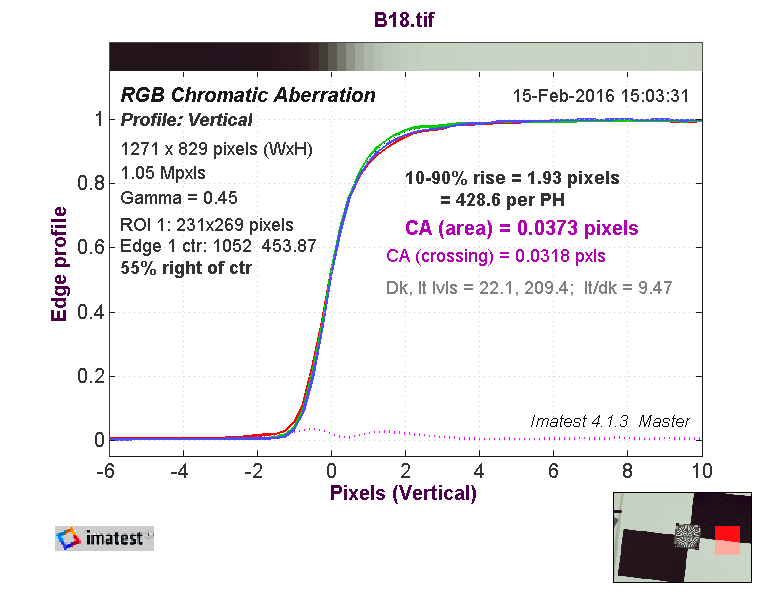
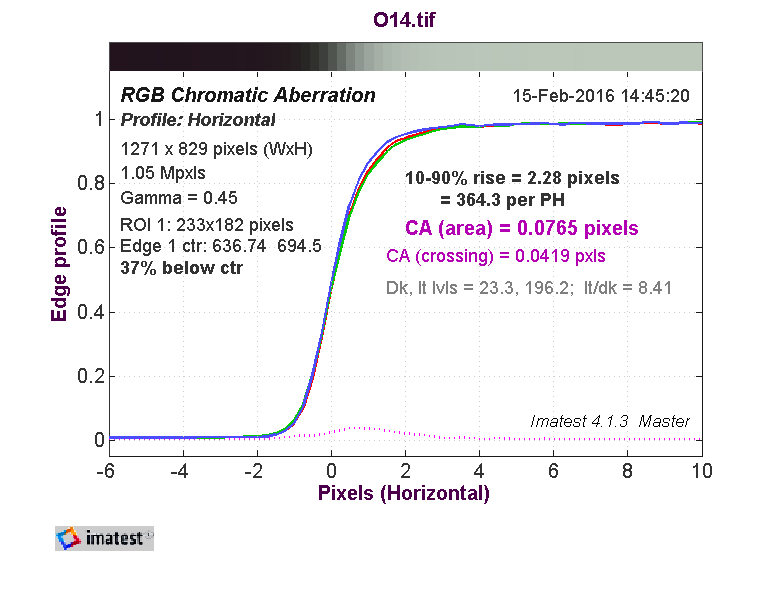
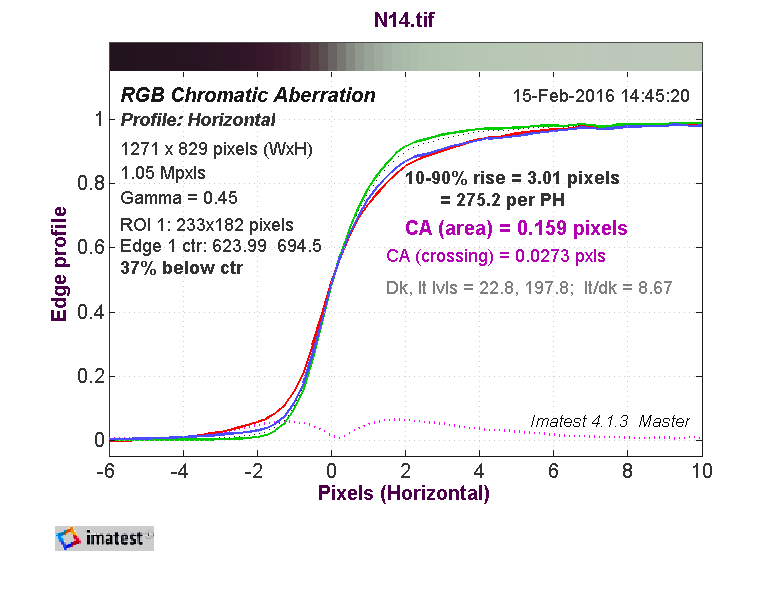
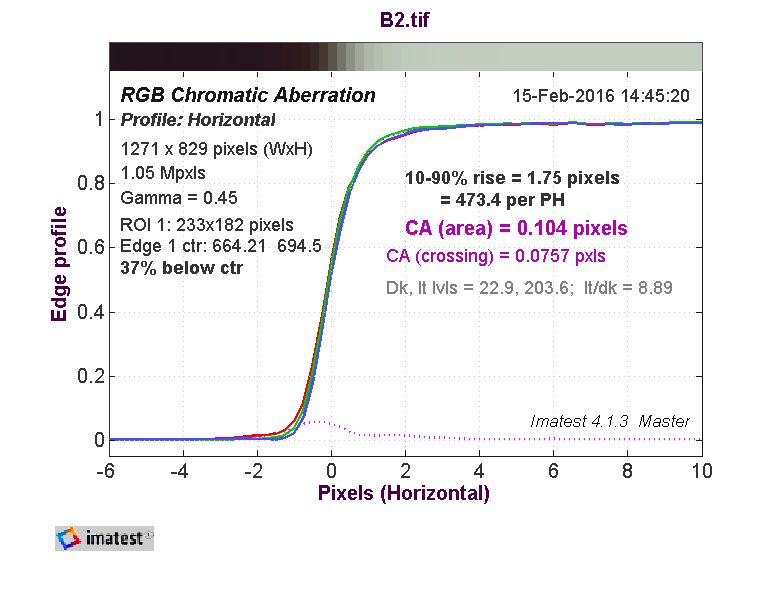
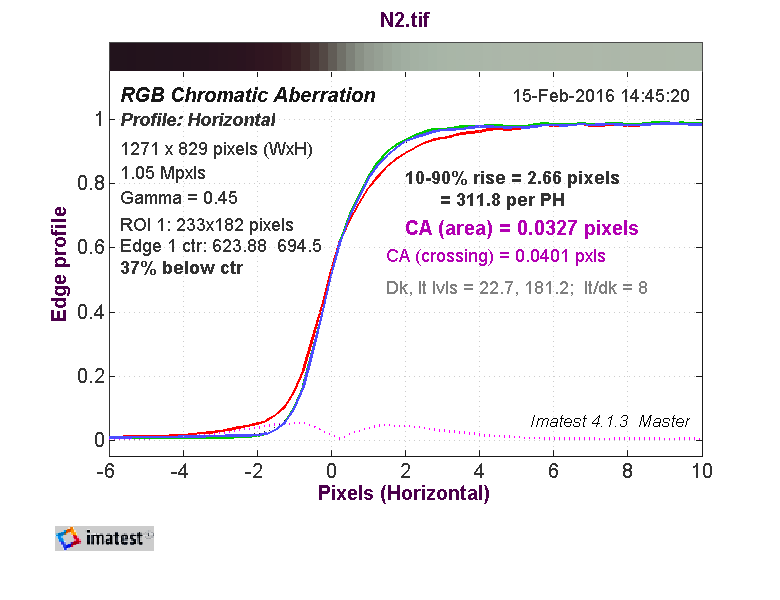
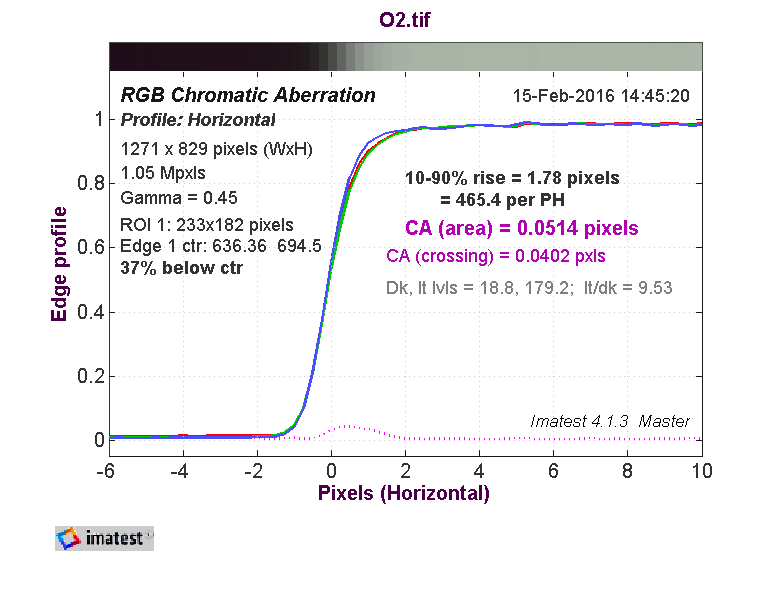
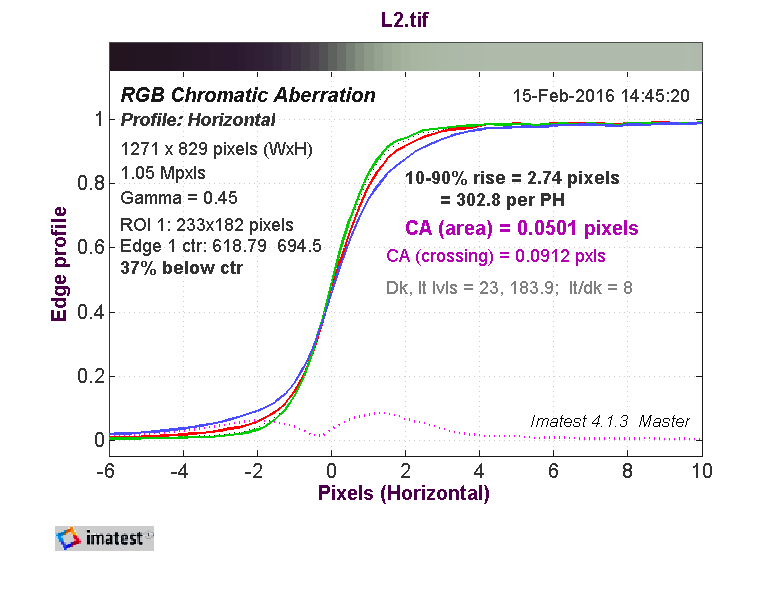
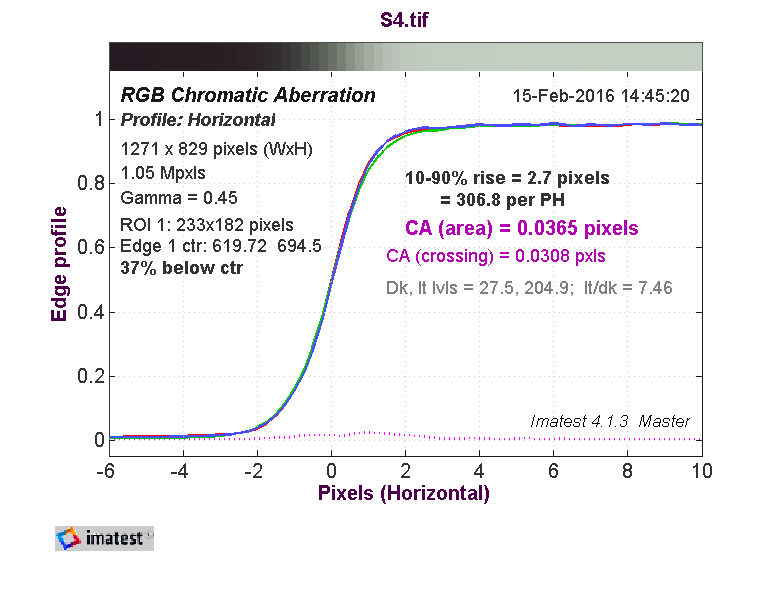
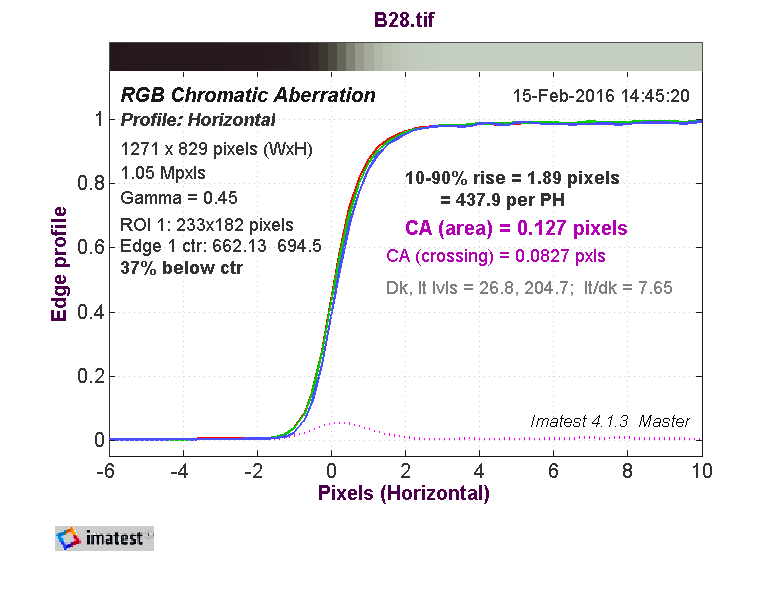
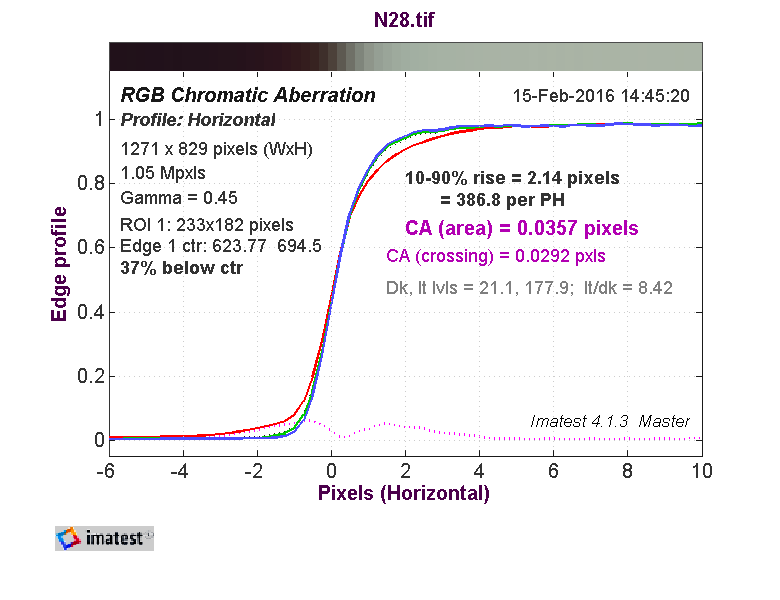
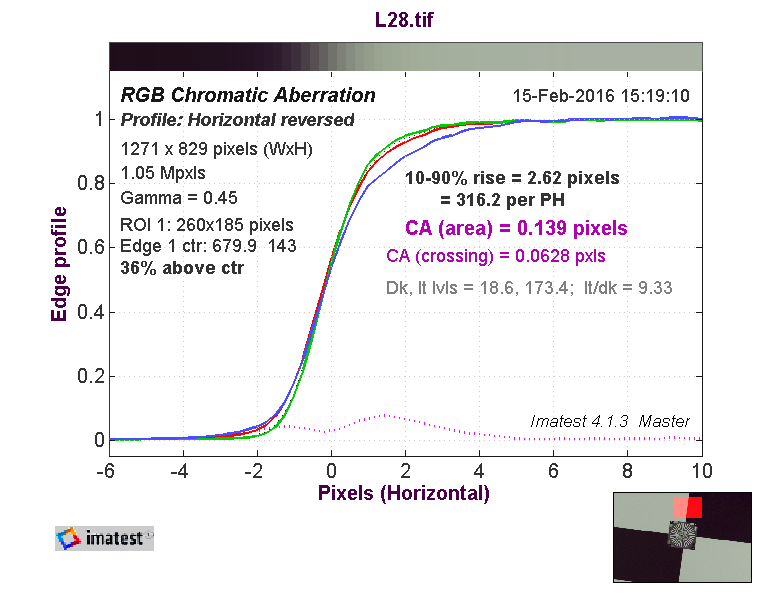
I can’t help but think that for chromatic aberration, a point spread function will be much more informative than a dark light transition, unless you convert the step response into an impulse response in software.
For now, I’m going with what Imatest does. Writing my own software to do this job is too much even for me.
Oh, wait. Are you volunteering to write the code? Or do you know a package I can use that does all the heavy lifting?
Jim
Does Imatest give you the numbers behind those graphs?
I might be able to do it…I’d probably just use Matlab or Octave, I think.
Not that I have been able to figure out yet.
Jim
You can get the LINE spread function easily enough by differentiating the Edge Spread Function. MTF Mapper produces all three (ESF, LSF, MTF).
Jack
Imatest can do LSF, too, but I don’t find it as intuitive for CA.
Jim
I am not sure exactly what to look at. This is the Nikkor at f/4 (7523)
http://i.imgur.com/qvcJh6D.gif
Jack
The animation is neat, but I think the best presentation would be all three LSFs on the same graph, like the Imatest curves I just posted, but without the graph-obscuring text. However, on the whole I find the Imatest CA graph more intuitive the the LSFs.
Jack: That’s what I was going to end up doing, but overlaid all at once so you can see the offsets and smearing differences between the channels.
The edge spread function (step response) isn’t as intuitive to me.
Hi Jim, many many thanks for theses tests. It takes much time and the result are very very good, indeed!
I made some similar tests with RawDigger-software. But, it is only a field-test and approach to your (imatest) results.
And, I can confirm your results. I come to same conclusion. Yes, Otus is an outstanding lens, better not to take it in the hand and put it on …
Interesting how non-APO the APO Summicron 90 is 🙂